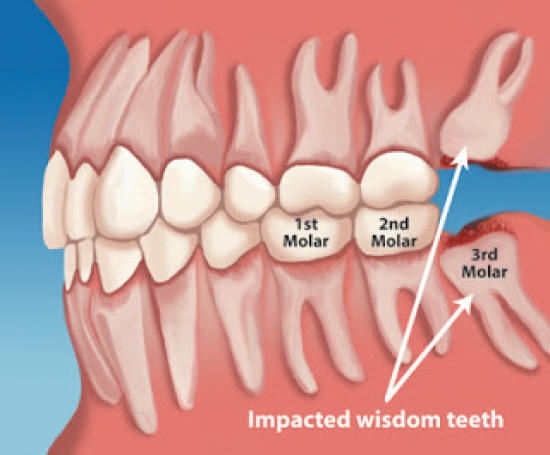Wisdom Teeth Woes: From Impaction to Inflammation Part 1
Wisdom teeth often emerge in late adolescence or early adulthood. While some people experience no issues, many face discomfort or complications.
Wisdom Teeth: What You Need to Know About These Late Bloomers
The third molars, commonly known as wisdom teeth, are the last set of permanent teeth to erupt in the oral cavity. They usually make their appearance between the ages of 18 and 25, a time often associated with adulthood and maturity—hence the name "wisdom teeth." However, their arrival isn’t always smooth, and for many people, it leads to a series of uncomfortable problems.
Why Do Wisdom Teeth Get “Stuck”?
For wisdom teeth to erupt normally, they need to be in a favourable position and have adequate space in the jaw. In today’s world, it has become increasingly common for young adults to have abnormally positioned or partially erupted wisdom teeth.
So, why is this happening more often now?
One of the main reasons is a mismatch between tooth size and jaw size. Over time, evolutionary changes in our diets and lifestyles have contributed to smaller jawbones in modern humans. Unfortunately, our teeth haven’t caught up with this change in size. As a result, when the wisdom teeth try to erupt, there’s often no room left. They may become impacted (trapped in the bone) or only partially emerge, creating a host of dental issues.
Why Are Partially Erupted Wisdom Teeth Risky?
A partially erupted wisdom tooth isn’t just inconvenient—it can be a source of serious dental problems.
These teeth often create a small flap or cuff of gum tissue over them. Food particles and bacteria can easily get trapped in this area, leading to infection, pain, and bad breath. The tight space between the wisdom tooth and the second molar becomes an ideal place for food debris and plaque to accumulate, increasing the risk of cavities in both teeth.
Moreover, the upper wisdom tooth can bite down on this gum tissue, causing it to swell, bleed, or get injured—further complicating the issue and making the area very painful.
Signs of a Problematic Wisdom Tooth
The signs usually start subtly. You may notice:
- Discomfort or pain in the back of the mouth
- Chewing difficulty or food getting stuck
- Swelling, redness, or tenderness near the gum
- Pain while opening the mouth or when swallowing
- Pain that radiates to the ear, jaw, or side of the head
- A bad taste or bad breath from pus drainage
- Restricted mouth opening and disturbed sleep
These symptoms suggest your wisdom tooth might be infected or impacted.
When Is It an Emergency?
If you're experiencing severe pain or swelling on the side of your jaw or throat and are unable to open your mouth, chew, or swallow—you need urgent care.
This likely means the infection has spread beyond the tooth, affecting the surrounding bone and tissue spaces. At this stage, you will need immediate attention from an Oral & Maxillofacial Surgeon. Treatment may include oral or IV medications, followed by surgical removal of the tooth once the infection is under control.



